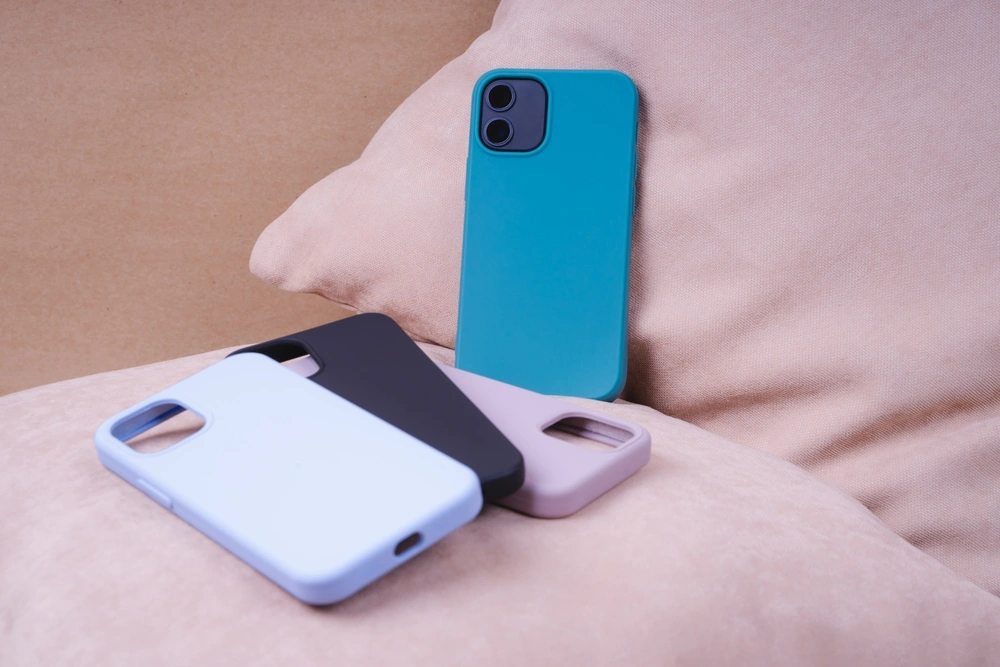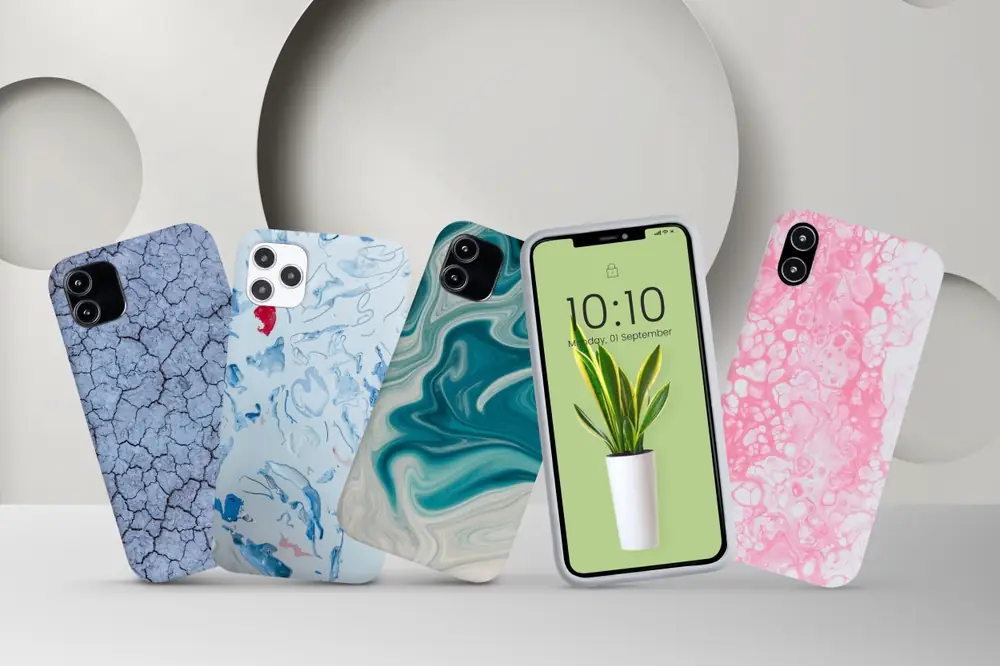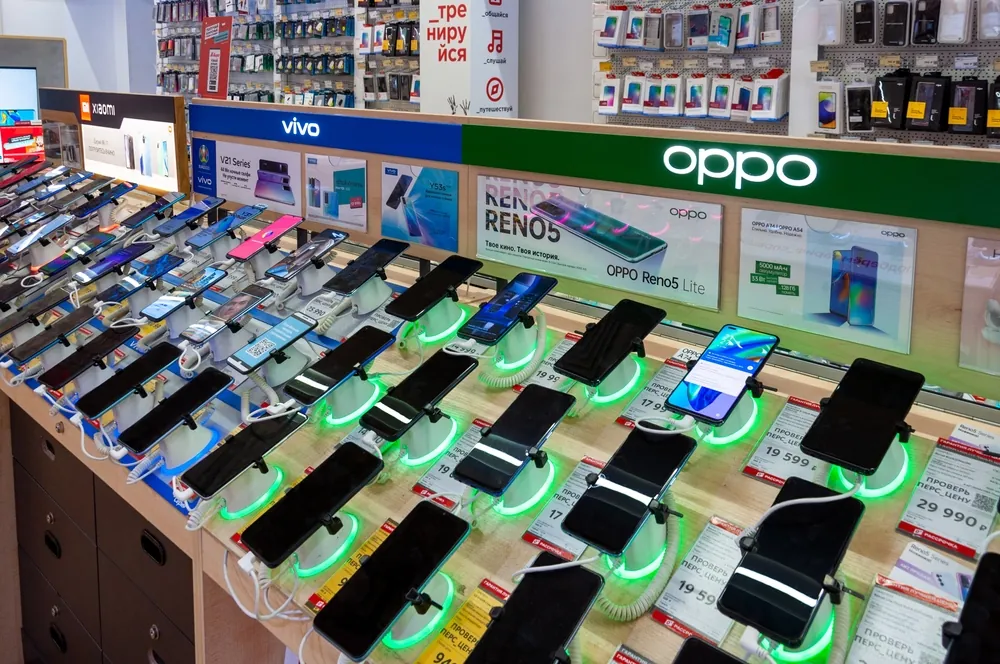Let’s be real: almost everyone has a smartphone these days. And what do most people do shortly after getting a new phone? They buy a case for it. But not just any case – they want a case that speaks to them, protects their investment, and maybe even makes a statement. This is where you, the aspiring entrepreneur looking to start a custom phone case business, come in.
The idea of starting your own business can feel daunting, but imagine turning a creative passion into a thriving venture. Selling custom phone cases isn’t just about moving products; it’s about helping people express themselves, safeguard their tech, and connect with something unique. If you’ve got a knack for design, an eye for trends, and a desire to build something meaningful, you’re in the right place. Consider me your guide on this exciting journey.
The Ever-Growing Phone Case Market: Is There Room For You?
You might be thinking, “The market for phone cases must be saturated, right?” It’s a valid concern. Walk into any electronics store, and you’ll see walls of cases. Browse online, and the options are endless. However, “saturated” doesn’t mean “impenetrable.” It simply means the bar is higher for standing out.
The global phone accessories market, of which cases are a significant part, is a multi-billion dollar industry that continues to grow. Why? Because new phone models are released annually, people upgrade their devices frequently, and cases get worn out, break, or simply go out of style. This constant churn creates an evergreen demand.
Why a custom phone case business?
This is where the magic happens. While mass-produced cases cater to broad tastes, custom phone cases tap into a deeper desire: individuality. Think of it like this: anyone can buy a generic t-shirt, but a custom-designed one holds more personal value.
Here’s why a custom phone case business isn’t just viable, but potentially very lucrative:
- Personal Expression: People love to personalize their belongings. A custom phone case allows them to display their personality, passions, or even their favorite photos directly on an item they use dozens of times a day.
- Unique Gifting: Custom cases make fantastic gifts. Imagine a grandparent’s phone case featuring their grandkids, or a sports fan’s case emblazoned with their team’s logo. These aren’t just gifts; they’re cherished keepsakes.
- High-Profit Margins: Once you’ve perfected your design and production process, the cost per unit can be quite low, allowing for healthy profit margins.
- Low Barrier to Entry: You don’t need a massive factory to start. With the right equipment and a creative mind, you can begin from your home or a small studio.
- Evolving Trends: The phone case market is always changing, offering endless opportunities to innovate with new materials, designs, and customization options.
There’s definitely room for you, especially if you focus on delivering exceptional quality, unique designs, and an unparalleled customer experience.
Essential Steps to Launching Your Custom Phone Case Business
Starting any business can feel like navigating a maze, but breaking it down into manageable steps makes it much clearer. Let’s walk through the critical phases to get your custom phone case venture off the ground.
1. Define Your Niche and Target Audience
This is arguably the most crucial first step. Trying to sell to everyone means you’ll likely appeal to no one. Instead, pinpointing a specific niche allows you to tailor your designs, marketing, and entire brand experience to resonate deeply with a particular group.
Ask yourself:
- Who are your ideal customers? Are they teenagers obsessed with pop culture, busy professionals seeking minimalist elegance, pet lovers who want their furry friends on their cases, or newlyweds looking for souvenirs?
- What kind of aesthetics do they prefer? Are they drawn to vibrant colours and bold patterns, sophisticated metallics, or earthy, natural textures?
- What problems are you solving for them? Are they tired of generic cases? Do they want a case that offers superior protection and style? Are they looking for a unique gift?
For instance, you might decide to focus on:
- Eco-conscious consumers: Offering biodegradable or recycled material cases with nature-inspired designs.
- Gamers: Cases featuring intricate game art, customizable gamer tags, or ergonomic grips.
- Artists and illustrators: Collaborating to showcase their work on cases, or providing a platform for customers to upload their own art.
Defining your niche gives you clarity and direction, making every subsequent decision easier.
2. Develop Your Business Plan
Think of your business plan as your roadmap. It doesn’t need to be a 50-page corporate document, but it should be a clear, concise guide that outlines your vision and how you plan to achieve it.
Key elements to include:
- Executive Summary: A brief overview of your business, its mission, and its goals.
- Company Description: What your business is, what it sells, and what makes it unique.
- Market Analysis: Your research on your target audience, competitors, and market trends.
- Products and Services: A detailed description of the types of cases you’ll offer, customization options, and any other products.
- Marketing and Sales Strategy: How you’ll reach your customers and convince them to buy.
- Operations Plan: How your cases will be designed, produced, and shipped.
- Management Team: Who is involved and what are their roles (even if it’s just you!).
- Financial Projections: Startup costs, pricing strategy, sales forecasts, and profit/loss estimates.
This plan will not only keep you focused but will also be essential if you ever seek funding or partners.
3. Master Your Design and Customization Process

This is the creative core of your business. Your ability to translate ideas into beautiful, tangible products will be your differentiator.
Consider the following:
- Design Tools: Will you use graphic design software like Adobe Photoshop/Illustrator, Canva, or specialized online design tools?
- Customization Options: How much input will customers have? Will they upload their own photos, choose from a library of fonts and graphics, or simply select from pre-designed templates? The more intuitive and robust your customization tool, the better.
- Material Selection: What types of cases will you offer? Hard plastic, soft silicone, rugged shockproof, wood, leather? Each material has different printing requirements and appeals to different customer needs.
- Printing Technology:
- Sublimation: Great for vibrant, full-color designs on specific case types, but requires special coatings.
- UV Printing: Versatile, allows printing on almost any material, including textured surfaces, and offers raised ink effects.
- Direct to Garment (DTG) or Direct to Film (DTF): While traditionally for apparel, some adapted machines can print on case inserts or specific materials.
- Engraving/Laser Etching: Perfect for wood or metal cases, offering a premium, tactile finish.
Invest time in mastering your chosen printing method and ensuring consistent, high-quality output. Your reputation will hinge on the quality of your finished product.
4. Set Up Your Supply Chain and Fulfillment
Once a customer places an order, you need to deliver. This involves getting blank cases, creating the custom design, and shipping it out efficiently.
- Blank Case Suppliers: Research reliable suppliers of high-quality blank phone cases for various models. Look for bulk discounts and consistent stock. Alibaba, AliExpress, and specialized wholesale phone accessory distributors are good starting points.
- Printing Equipment: If you’re doing in-house production, source your printer, inks, and any other necessary machinery. Remember to factor in maintenance and replacement costs.
- Packaging: How will your cases arrive? Think about protective packaging (bubble mailers, sturdy boxes) and branded packaging that enhances the unboxing experience (custom tissue paper, stickers, a thank-you note).
- Shipping Logistics:
- Shipping Carriers: Compare rates and services from postal services (USPS, Royal Mail) and private carriers (UPS, FedEx, DHL).
- Shipping Options: Offer different speeds (standard, expedited) and transparent pricing.
- Order Tracking: Provide tracking information so customers can monitor their delivery.
- Fulfillment Model: Will you produce and ship everything yourself, or will you use a print-on-demand (POD) service? POD can be a great way to start with minimal upfront investment, as they handle the printing and shipping, but often at a higher per-unit cost.
A smooth supply chain ensures customer satisfaction and allows you to scale.
5. Create Your Brand Identity
Your brand is more than just a logo; it’s the personality, promise, and overall experience you offer. It’s what makes you memorable and connects with your audience emotionally.
- Brand Name: Choose something memorable, relevant to your niche, and available (check domain names and social media handles).
- Logo and Visuals: Invest in a professional logo that reflects your brand’s aesthetic. Develop a consistent color palette, typography, and imagery style.
- Brand Voice: How do you communicate? Are you playful, sophisticated, eco-friendly, edgy? This voice should be consistent across all your marketing materials, website, and customer interactions.
- Unique Selling Proposition (USP): What makes you different? Is it your unparalleled design quality, lightning-fast turnaround, exceptional customer service, or a specific type of case you offer? Clearly articulate what sets you apart.
A strong brand identity builds trust and loyalty, turning first-time buyers into repeat customers.
6. Build Your Online Storefront
This is your digital showroom, open 24/7 to the world. A professional, user-friendly online store is non-negotiable.
- E-commerce Platform:
- Shopify: Popular for its ease of use, extensive app store, and scalability. Great for beginners and growing businesses.
- WooCommerce (WordPress): More customizable if you’re comfortable with WordPress, but requires more technical know-how.
- Etsy: Excellent for handcrafted and custom goods, with a built-in audience, but you have less control over branding.
- Squarespace/Wix: Good all-in-one solutions for design-focused businesses, often with integrated e-commerce features.
- High-Quality Product Photography: Showcase your cases from multiple angles, on different phone models, and in lifestyle settings. Good photos are critical for online sales.
- Intuitive Customization Interface: If you offer design-your-own options, ensure the tool is easy to use, visually appealing, and provides real-time previews.
- Clear Product Descriptions: Detail materials, compatibility (which phone models), features (e.g., shock absorption), and care instructions.
- Secure Payment Gateways: Offer multiple trusted payment options (credit cards, PayPal, Apple Pay, Google Pay).
- Mobile Responsiveness: Most people browse on their phones, so your store must look and function perfectly on mobile devices.
Your online store is often the first and most important interaction customers have with your brand, so make it count.
7. Marketing and Sales Strategies
Even the best custom cases won’t sell themselves. You need a robust plan to reach your target audience and convert them into customers.
- Social Media Marketing:
- Instagram/TikTok: Highly visual platforms perfect for showcasing designs, behind-the-scenes glimpses, and customer testimonials. Use relevant hashtags.
- Facebook: Create a business page, run targeted ads, and join relevant groups.
- Pinterest: Great for driving traffic with visually appealing pins featuring your cases.
- Search Engine Optimization (SEO): Optimize your product descriptions and website content with keywords your target audience uses (e.g., “custom iPhone 15 case,” “personalized pet photo case”).
- Content Marketing: Start a blog with articles like “5 Ways to Protect Your Phone in Style,” “Choosing the Right Case Material,” or “Gift Ideas for Tech Lovers.” This builds authority and drives organic traffic.
- Email Marketing: Build an email list from website visitors and customers. Send newsletters with new designs, promotions, and exclusive offers.
- Paid Advertising:
- Google Ads: Target people actively searching for phone cases.
- Social Media Ads (Facebook/Instagram Ads): Highly effective for targeting specific demographics and interests.
- Collaborations: Partner with influencers, local artists, or complementary businesses (e.g., phone repair shops).
- Contests and Giveaways: Generate buzz and attract new followers/subscribers.
- Referral Programs: Reward customers who refer new buyers.
Experiment with different strategies to see what resonates best with your audience.
Pricing Your Custom Phone Cases
Pricing isn’t just about covering costs; it’s about perceived value, market positioning, and ultimately, profitability. Getting it right is crucial.
Factors to Consider
- Cost of Goods Sold (COGS): This includes the blank case, ink/materials, packaging, and any labor directly involved in producing one case.
- Operating Expenses: Rent (if applicable), utilities, website fees, marketing costs, salaries (even if it’s just yours), and administrative overhead.
- Market Research: What are competitors charging for similar quality and customization options? Are you positioning yourself as a budget option, a premium brand, or somewhere in the middle?
- Perceived Value: What do customers feel your custom cases are worth? Unique designs, high-quality materials, and excellent customer service can justify higher prices.
- Branding: A strong, desirable brand can command higher prices.
- Customization Complexity: More intricate designs or extensive customization options might warrant a higher price.
- Shipping Costs: Decide if you’ll offer free shipping (and bake the cost into your product price) or charge separately.
Pricing Models
- Cost-Plus Pricing: This is a straightforward method.
- Calculate your total cost per case (COGS + a portion of operating expenses per unit).
- Add a desired profit margin percentage.
- Example: If a case costs you $10 to make and you want a 100% markup, you’d price it at $20.
- Value-Based Pricing: You price based on what customers are willing to pay, taking into account the perceived value of your custom designs and brand. This often allows for higher margins. If your designs are truly unique and your brand is strong, you can charge more than a purely cost-plus model might suggest.
- Tiered Pricing: Offer different price points based on customization complexity, case material, or design type.
- Basic custom case (upload a photo): $X
- Designer template case: $Y
- Premium material case: $Z
- Psychological Pricing: Ending prices with .99 (e.g., $19.99 instead of $20) can make products seem more affordable. Offering bundle deals (e.g., “Buy two, get 15% off”) can also increase average order value.
Start with a solid understanding of your costs, research your market, and don’t be afraid to test different price points to find what works best for your business and your customers.
Legal and Administrative Considerations
While less glamorous, ignoring the legal and administrative aspects can lead to significant headaches down the road. Get these right from the start.
Business Registration and Licenses
- Choose a Business Structure: Decide whether you’ll operate as a Sole Proprietorship, LLC (Limited Liability Company), Partnership, or Corporation. An LLC is often a good choice for small businesses as it protects your personal assets from business liabilities.
- Register Your Business Name: Check with your state/county for requirements.
- Obtain Necessary Licenses and Permits: Depending on your location and business type, you might need a general business license, a home-based business permit, or sales tax permits. Consult your local Chamber of Commerce or a small business advisor.
- Employer Identification Number (EIN): If you plan to hire employees or form an LLC/Corporation, you’ll need an EIN from the IRS.
Intellectual Property and Copyright
This is crucial for a custom design business.
- Copyright for Your Own Designs: Any original designs you create for your cases are automatically protected by copyright. You might consider formal registration for stronger protection.
- Using Third-Party Content: Be extremely careful when allowing customers to upload designs or using images/logos found online.
- Customer Uploads: Clearly state in your terms and conditions that customers are responsible for ensuring they have the rights to use any uploaded images. You may want to include a clause that allows you to refuse orders that appear to infringe on copyright.
- Licensed Content: If you want to use popular characters, sports team logos, or famous artwork, you must obtain proper licenses. Using copyrighted material without permission can lead to costly legal battles. “Fair use” is a narrow defense and generally doesn’t apply to commercial products.
- Public Domain: Content that is no longer protected by copyright (e.g., very old art) is generally safe to use. Always verify.
Terms and Conditions
Develop comprehensive terms and conditions for your website and sales. These should cover:
- Privacy Policy: How you collect, use, and protect customer data (especially important with custom photos).
- Return and Refund Policy: Clearly state your policy for custom products (e.g., “no refunds on personalized items unless there’s a manufacturing defect”).
- Shipping Policy: Delivery times, costs, and international shipping details.
- Content Usage Policy: Your stance on customer-uploaded content and intellectual property.
- Dispute Resolution: How you handle customer complaints or disagreements.
Having these documents clearly visible and easily accessible on your website protects both you and your customers.
Scaling Your Custom Phone Case Business

Once you’ve built a solid foundation, it’s time to think about growth. Scaling isn’t just about getting bigger; it’s about becoming more efficient and expanding your reach.
Expanding Product Offerings
Don’t just stick to phone cases. Leverage your design and printing capabilities to offer related, complementary products.
- Other Tech Accessories: Custom AirPods cases, laptop skins, tablet covers, smart watch bands.
- Personalized Gifts: Mugs, t-shirts, keychains, pop sockets – items that also benefit from custom printing.
- Related Lifestyle Products: If your brand has a specific aesthetic, consider expanding into items like notebooks, tote bags, or small home decor.
Wholesale and B2B Opportunities
Selling directly to consumers is great, but wholesale can unlock significant volume.
- Local Boutiques: Partner with local gift shops, electronics stores, or novelty shops to carry your branded cases.
- Corporate Gifting: Offer custom cases with company logos as corporate gifts for employees or clients.
- Event Merchandise: Design custom cases for conferences, festivals, or sports teams to sell as merchandise.
- Collaboration with Artists/Influencers: Create exclusive lines with local artists or social media personalities.
International Sales
The internet makes the world your marketplace.
- International Shipping: Research reliable and affordable international shipping options. Clearly outline customs duties and taxes for international customers.
- Localized Marketing: Consider translating your website or marketing materials if you target a specific non-English speaking country.
- Currency Conversion: Ensure your e-commerce platform handles multiple currencies.
Trade Show & Home Show
Physical presence can boost your brand recognition and sales.
- Trade Shows: Participate in industry-specific trade shows (e.g., gift shows, tech expos) to connect with potential wholesale buyers and other businesses.
- Home Shows/Craft Fairs: Set up a booth at local craft fairs, markets, or holiday shows. This allows direct interaction with customers, gathering feedback, and making immediate sales. It’s an excellent way to test new designs and build a local following.
Morning Market
Don’t overlook the power of local community markets.
- Farmers Markets/Community Markets: Many towns have weekly or monthly markets that attract a diverse local crowd. These are low-cost ways to showcase your products, get face-to-face feedback, and build brand awareness within your community. It’s also a great way to meet other small business owners for potential collaborations.
Facebook Marketplace
A surprisingly effective channel for both local and broader sales.
- Local Sales: List cases for local pickup to save on shipping. This is great for impulse buys.
- Targeted Ads: Use Facebook’s advertising tools to promote specific cases or customization options to relevant groups and demographics.
- Showcase Deals: Announce special promotions or limited-edition designs.
Scaling requires strategic thinking, but by diversifying your offerings and sales channels, you can grow your custom phone case business far beyond your initial vision.
Key Takeaways for Aspiring Phone Case Entrepreneurs
Starting a custom phone case business is more than just selling accessories; it’s about enabling self-expression and protecting precious tech. It’s a journey that demands creativity, strategic planning, and a genuine passion for what you do.
Remember these core principles:
- Niche Down to Stand Out: Don’t try to be everything to everyone. Find your specific audience and cater to their unique desires. This focus will make your marketing more effective and your brand more memorable.
- Quality is King: In a crowded market, superior product quality and a seamless customer experience will differentiate you. Invest in good materials, reliable printing, and exceptional service.
- Brand Story Matters: Your brand is your promise. Develop a compelling identity, a consistent voice, and a visual style that resonates with your target audience. People buy into stories, not just products.
- Embrace Technology: Your online storefront, design tools, and marketing platforms are your most powerful assets. Master them, keep them updated, and leverage them to their fullest potential.
- Stay Legal and Protected: Understand the legalities of running a business and, critically, respect intellectual property. It protects both you and the creative community.
- Always Be Learning and Adapting: The tech world moves fast. New phone models, printing technologies, and design trends emerge constantly. Stay curious, test new ideas, and be willing to evolve your business.
This isn’t just about selling cases; it’s about building a brand that customers love and trust. With dedication, creativity, and a customer-first approach, your custom phone case business can not only survive but thrive. Now, go unleash your creativity and build something amazing!




